Susan Renwick
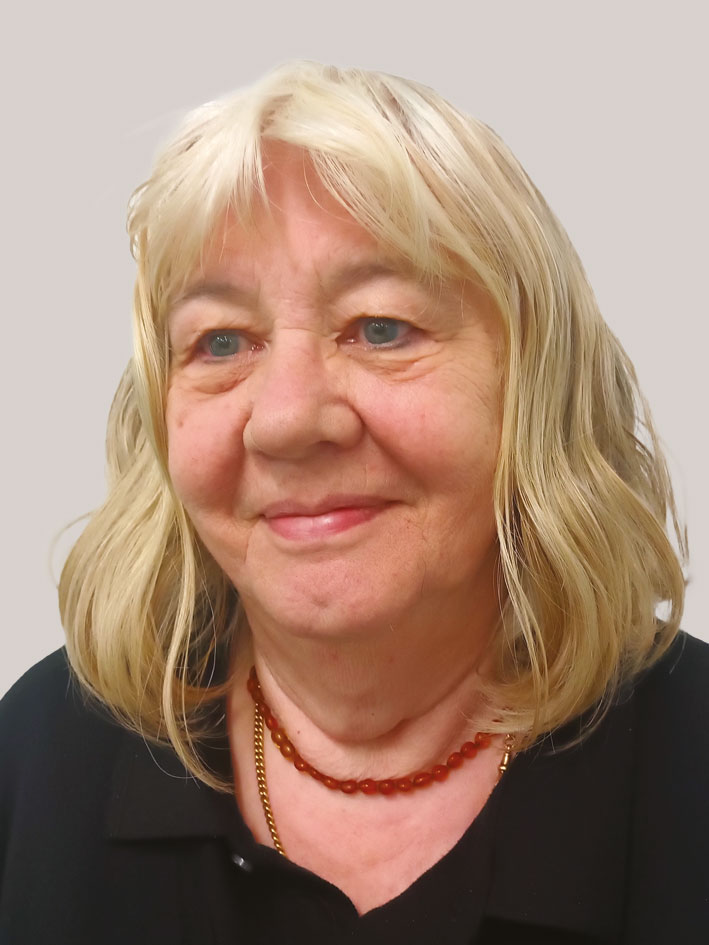 Project title: Exploring the use of response art for mitigating the effects of vicarious trauma for therapists working with First Nation clients.
Project title: Exploring the use of response art for mitigating the effects of vicarious trauma for therapists working with First Nation clients.
Originally from the UK, Susan’s art practice developed during covid lockdowns. Unable to return to Queensland, during this period, she enrolled in an art course, something she had always wanted to do but never had. Here, Susan experienced firsthand the healing nature of art immersion and reflection.
Prior to this, Sue spent many years teaching First Nations people at Cairns TAFE, as well as counselling at the local women’s refuge service. In later years Sue taught at a Chinese University in Shanghai, as a career counsellor for an Australian University in Vietnam, a career counsellor in Bhutan and as a curriculum writer in Burma. These experiences ignited a passion for working cross culturally and for political change to alleviate personal troubles.
Experiencing the healing power of art firsthand, extending her skills in counselling and social work by finding out more about art therapy, seemed the obvious course to take. Currently working as a Social and Emotional Wellbeing Counsellor in an Australian First Nations community, art therapy offers a healing modality which is culturally appropriate and beneficial for people living with intergenerational trauma. These experiences highlight the need for selfcare for therapists working in remote communities and with people who have trauma backgrounds. Sue’s research and artwork is an extension of this awareness based on the use of art to reflect on vicarious trauma responses in the therapist.
The artwork in this exhibition focuses on Sue’s response art whilst working with clients experiencing trauma. These she sees as having a mitigating effect on vicarious trauma and burnout. Her art works are developed as an expression of feelings as she focuses on the session and the impact on her own emotions, memories and reactions to the clients’ stories. Pastels are used extensively as well as collage as a way to engage the senses and emotions and externalize the emotional reactions onto the paper. The research journey confirms not only the healing power of art, but also the ability of response art to provide insights into the trauma experiences of both client and therapist as they use empathy to journey together towards reconciliation and healing. Using response art practice immediately after therapeutic interactions provides for ongoing self-care, self-reflection and mitigates the effects of vicarious trauma. Sue would like to extend her research in future to further develop insight and experience in this field of practice.
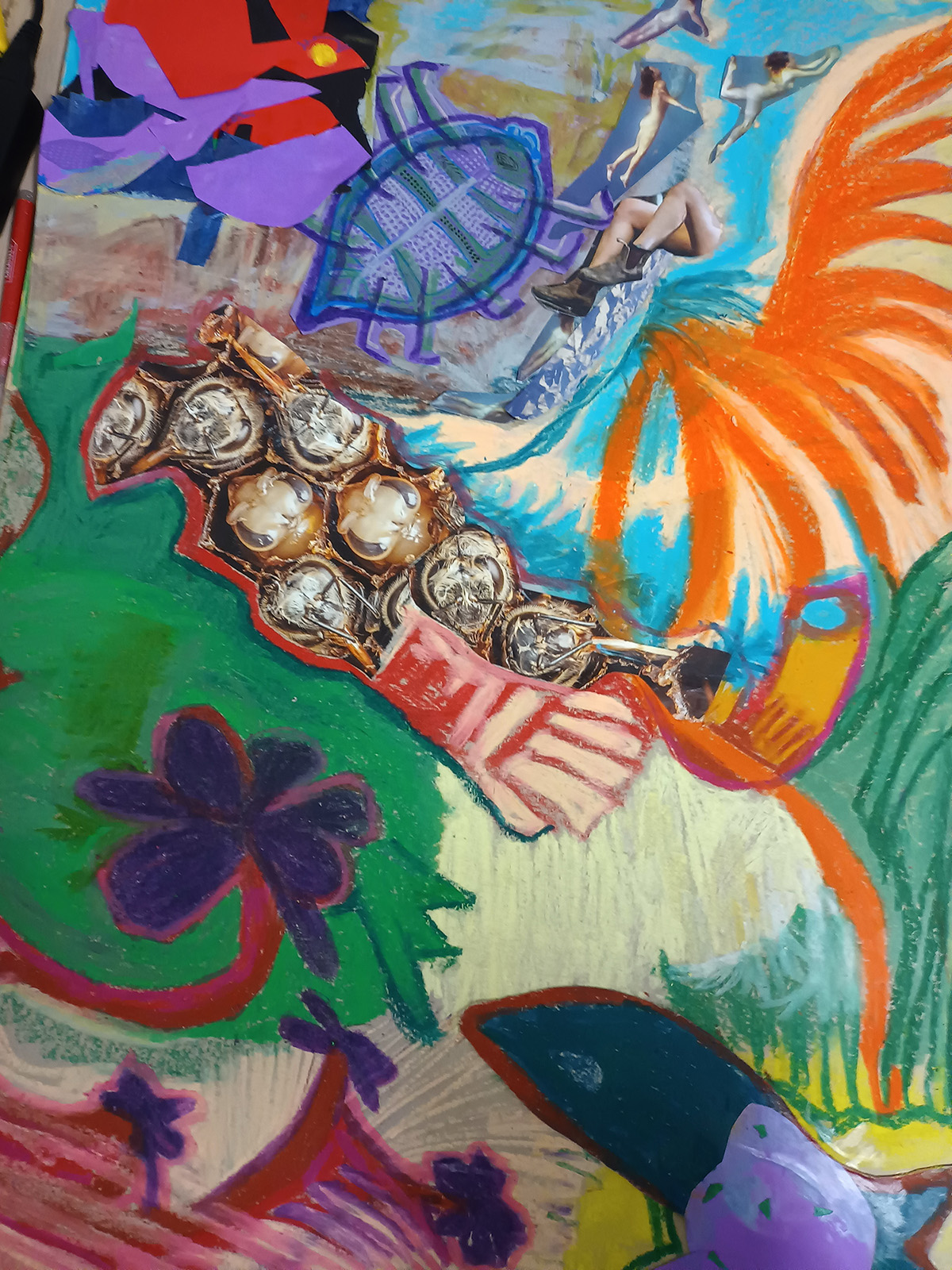
Mixed media
60cm x 90cm
“Follow your bliss and the universe will open doors”. Sparks of curiosity and a call to venture into unfamiliar territory. The bird jumps, answering with curiosity. Wholehearted engagement leads to an undergrowth of possibilities where mentors and allies provide support.
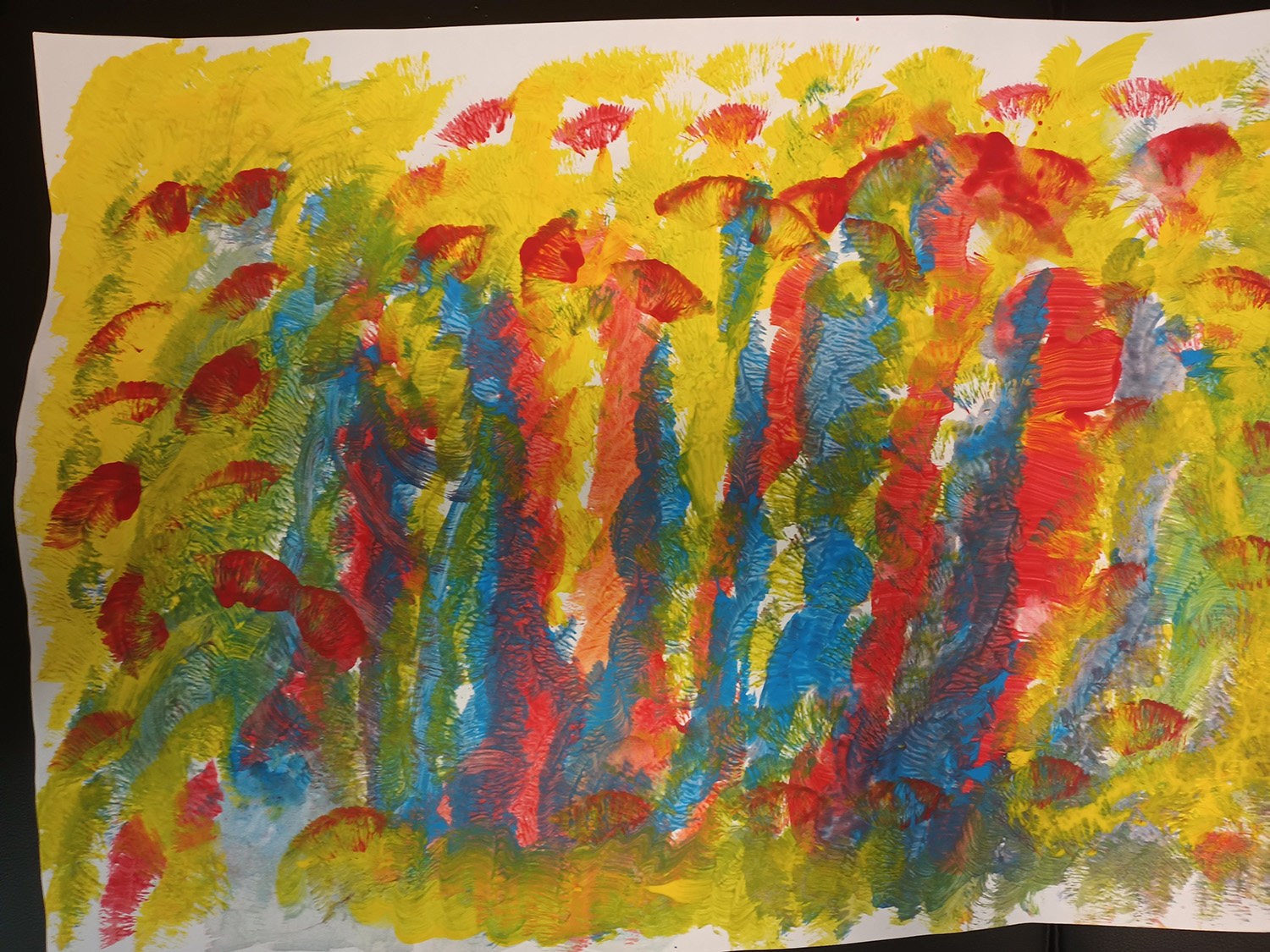
Acrylic paint on paper
61cm x 46cm
Empathy invites Trauma to enter the being, response art allows paint to be poured which swirls and travels its own course. A paintbrush provides direction and rhythm, patterns change and colours merge to limit trauma’s power.
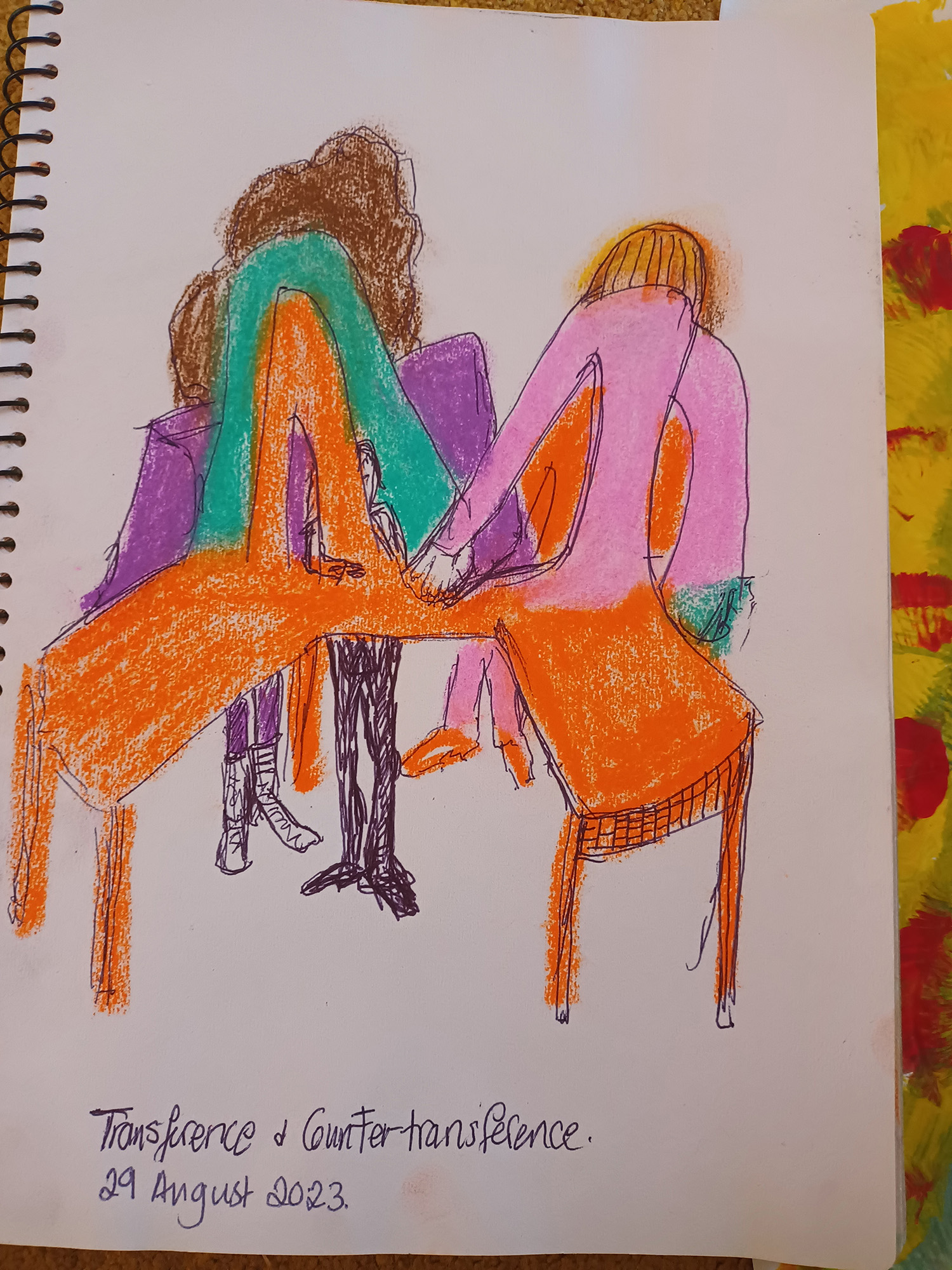
Pastels and biro
30cm x 37.5cm
Transference and countertransference engage interactively, calling on their friends’ vicarious trauma and burnout to join in the fun. Countertransference and empathetic processes allow turmoil and dangerous trauma to relocate into the body of the therapist.
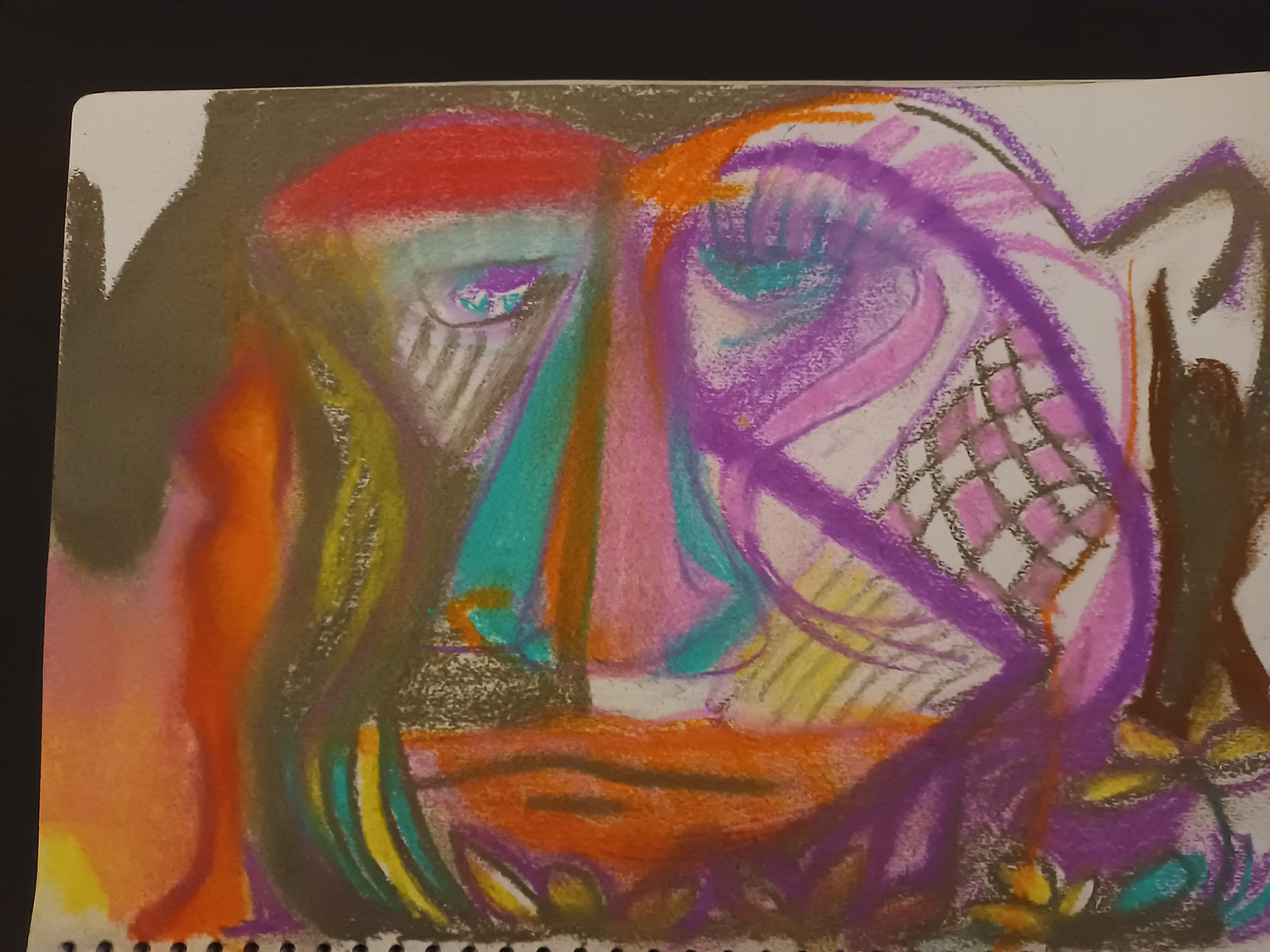
Pastels (Chalk)
37.5cm x 30cm
Difficult times ahead during the research journey. Stormy weather led to metaphoric beings without answers suggesting a change of course and directing the boat to travel back to a safe harbour. Perhaps a storm in the teacup. Time will tell.
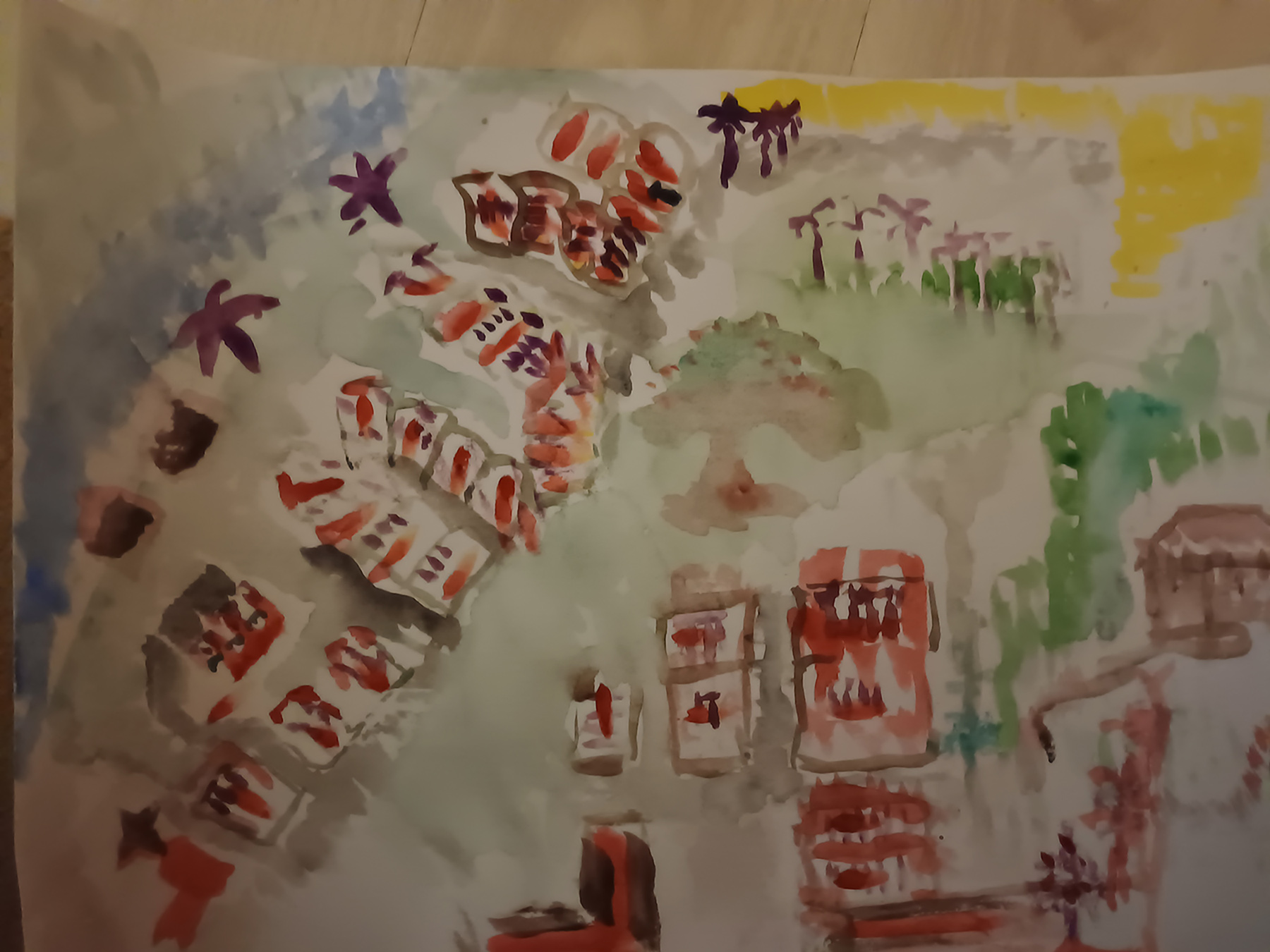
Watercolour
61cm x 46cm
A useful base line for the journey forward can be measured with a map.
“Look where you are going and where you have been. Look for a way through. Remember to keep going but choose your path carefully. It may be winding.”
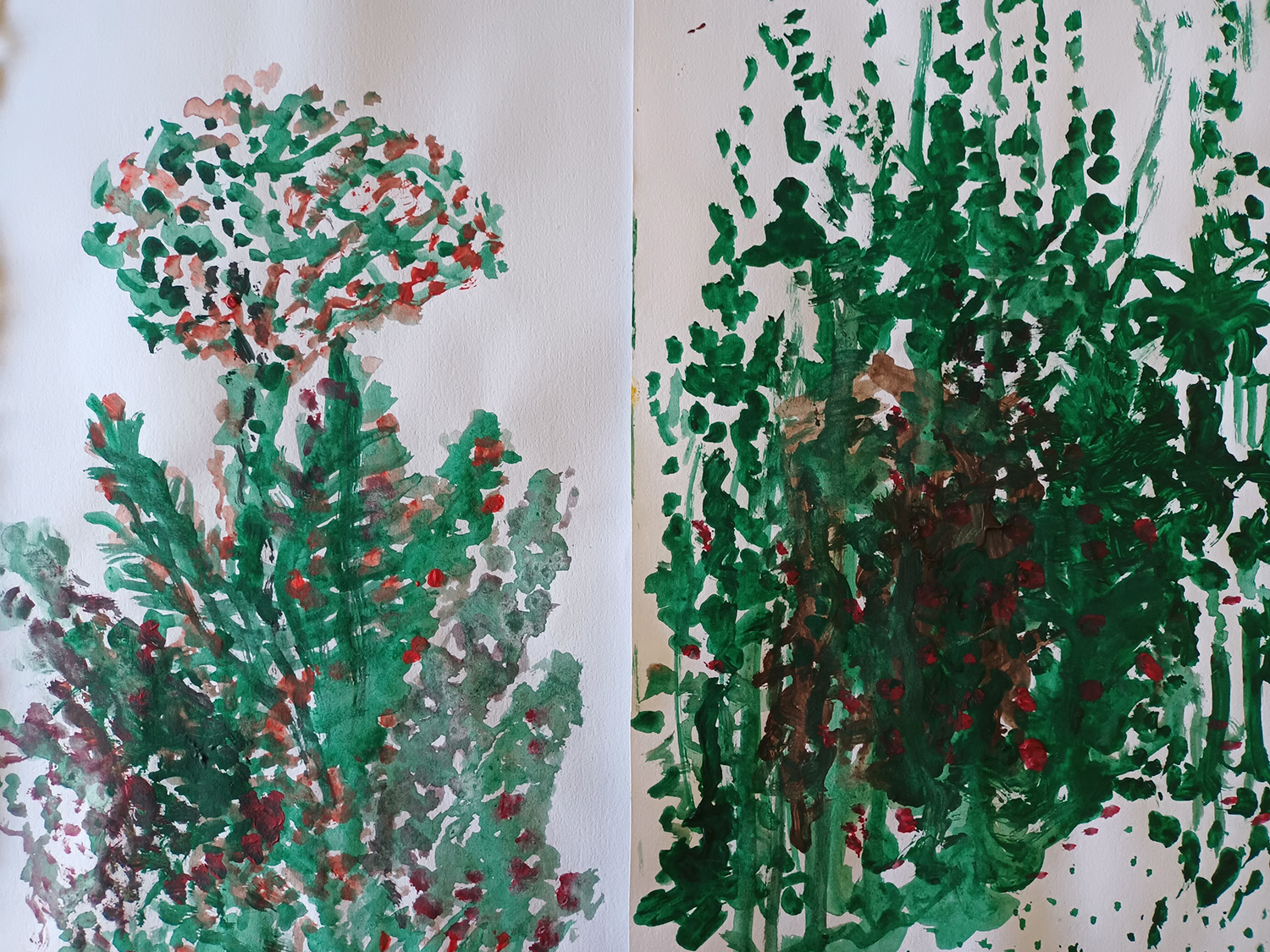
Gauche
28cm x 83cm
The landscape is lush. The possibilities are endless. Immersion takes time. Wandering through the peaceful surroundings finding possible answers, grappling with difference, and emerging with new understanding into the new land of incubation.
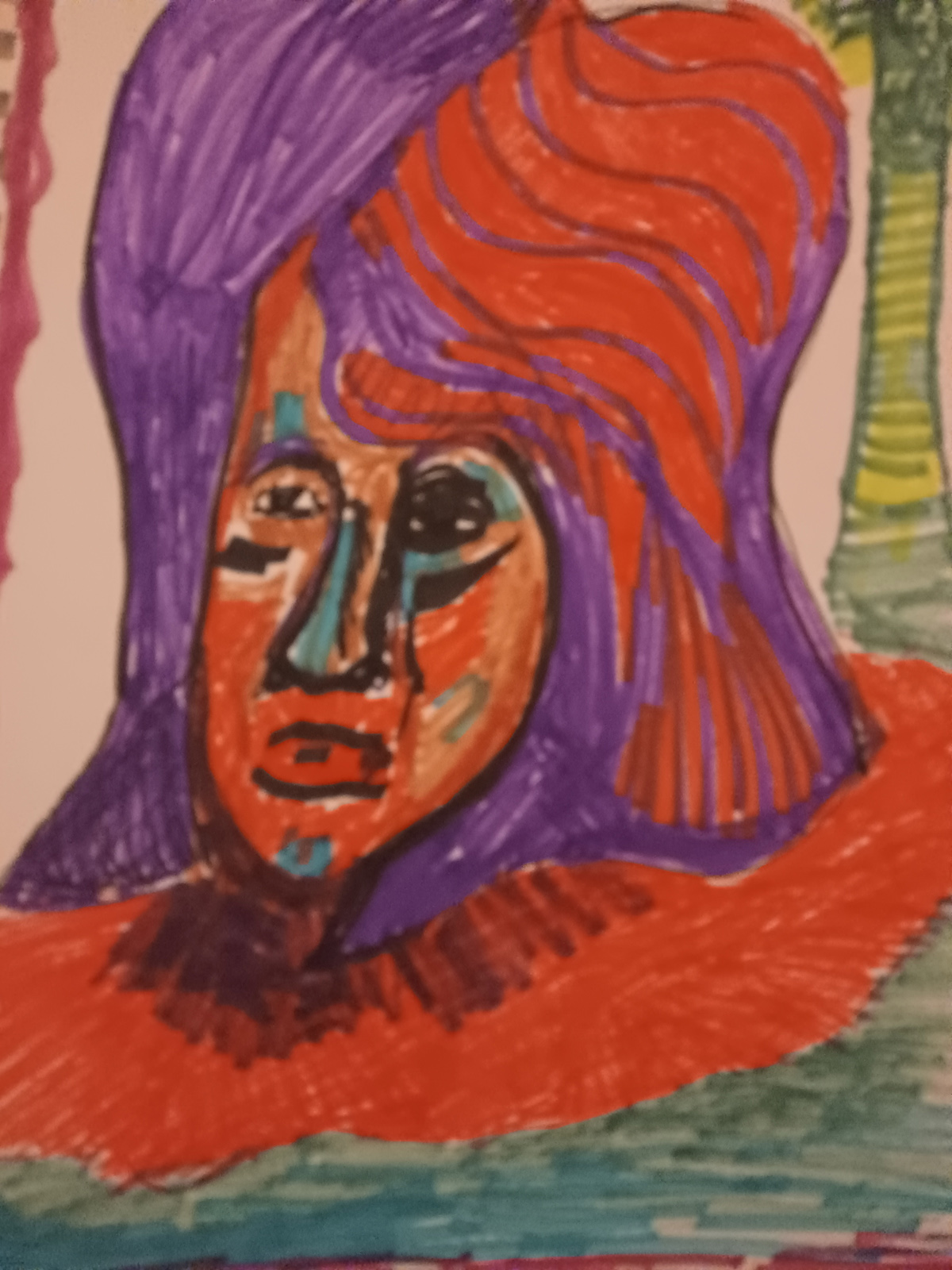
Chalk pastels and coloured pens
30cm x 37.5cm
The women in red and purple sits thinking of all the places she has been, all the things she has seen and all the friends who have offered her help. Being not doing she waits for Synthesis to appear.
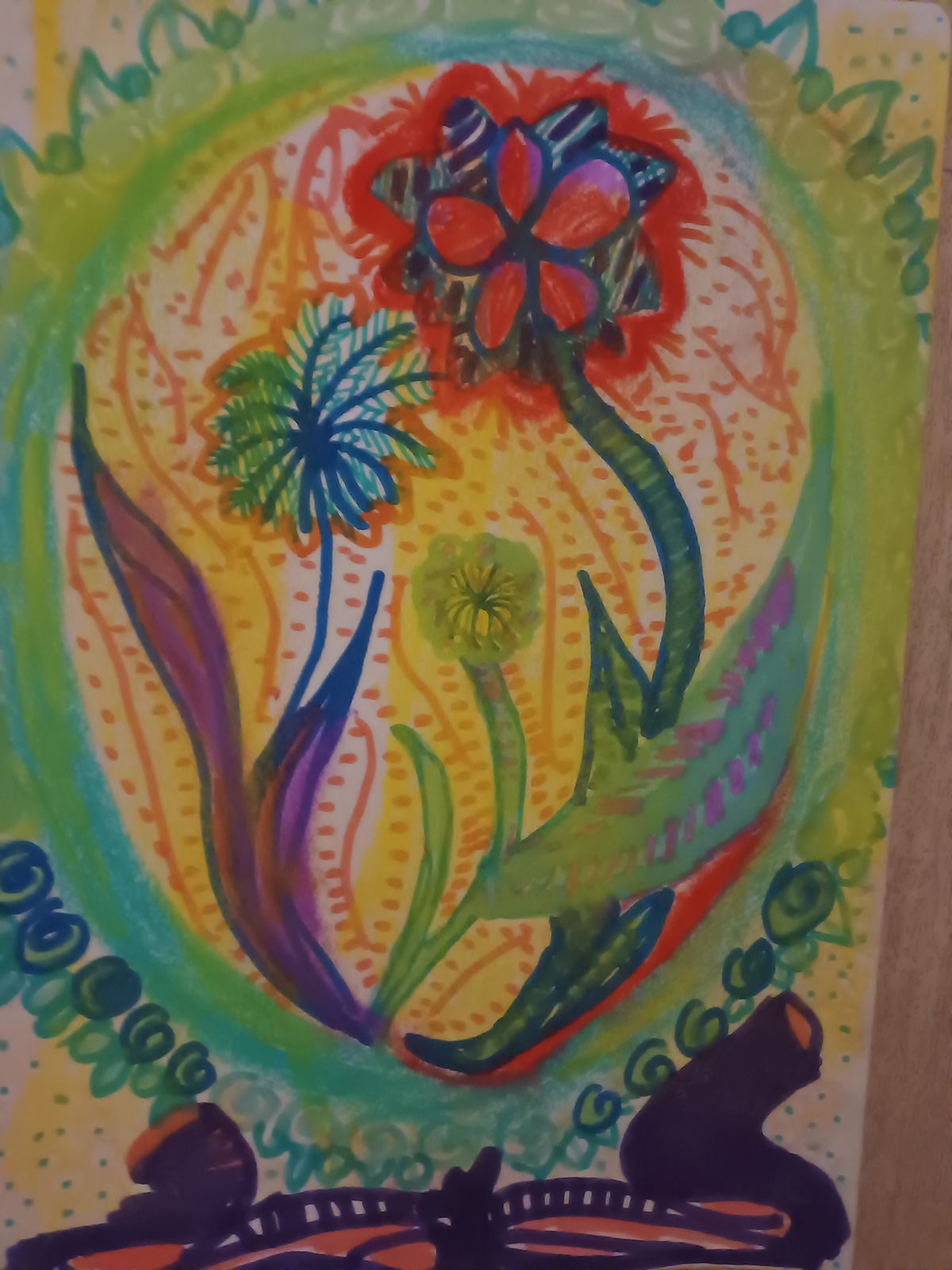
Mixed media
30cm x 37.5cm
Transformation and New Growth celebrate success in the face of all odds. Flowers bloom despite the difficulties and the journey comes to a successful end. Contained within the fertile forest, a well-earned rest and celebrations are in order. Until the next adventure…
